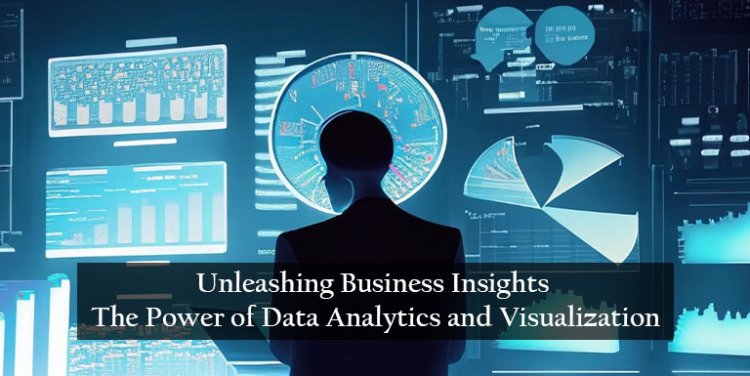Unleashing Business Insights: The Power of Data Analytics and Visualization

In the digital age, data is the lifeblood of modern businesses. The ability to collect, analyze, and derive actionable insights from data is a game-changer. This is where data analytics and visualization come into play. In this blog post, we'll explore how these two powerful tools can help businesses make informed decisions, drive growth, and stay competitive.
The Data Revolution
The world is generating data at an unprecedented rate. Every click, like, purchase, or even the sensors in your smart refrigerator contribute to the massive data pool that businesses can tap into. However, raw data alone is overwhelming and often useless without the right tools to make sense of it.
This is where data analytics and visualization step in to transform raw data into valuable insights.
Data Analytics: Unearthing the Insights
Data analytics is the process of examining, cleaning, transforming, and modeling data to discover meaningful patterns, draw conclusions, and support decision-making. Here's how it works:
-
Data Collection: First, data is collected from various sources, including databases, spreadsheets, sensors, and social media.
-
Data Cleaning: Raw data is often messy, with missing values, inconsistencies, and errors. Data analysts clean and preprocess the data to ensure its accuracy.
-
Data Transformation: Analysts may convert data into different formats, perform calculations, and apply statistical methods to extract useful information.
-
Data Modeling: Statistical models, machine learning algorithms, and other techniques are applied to find patterns and relationships within the data.
-
Insights and Decision-Making: The final step involves interpreting the results and using them to inform decisions, solve problems, and identify opportunities.
Data analytics can provide businesses with valuable insights, such as customer behavior, market trends, operational efficiency, and more.
Data Visualization: The Art of Storytelling
Data is often complex and difficult to grasp at a glance. This is where data visualization comes into play. Data visualization is the graphical representation of data to help people understand the significance of data by placing it in a visual context.
Here's why data visualization is important:
-
Clarity: Visual representations, such as charts, graphs, and infographics, make data more accessible and easier to comprehend.
-
Patterns and Trends: Visualization helps in identifying patterns, trends, outliers, and correlations in the data.
-
Decision Support: It aids decision-makers in quickly grasping complex information and making informed decisions.
-
Storytelling: Data visualization can turn a sea of numbers into a compelling narrative, making it easier to communicate findings to stakeholders.
Bringing Data Analytics and Visualization Together
The real power of data analytics and visualization lies in their synergy. Together, they can supercharge an organization's data-driven decision-making process. Here's how they complement each other:
-
Exploration: Data analytics uncovers insights, and data visualization presents them in a clear and engaging way.
-
Communication: Data visualization allows for easy sharing of insights with non-technical stakeholders.
-
Real-Time Insights: Data analytics can provide real-time data, and data visualization makes it immediately understandable.
-
Predictive Analytics: By analyzing historical data, data analytics can support predictive modeling, while data visualization can help in presenting future projections.
Tools of the Trade
To make the most of data analytics and visualization, businesses can employ various tools and software, such as:
-
Data Analytics Tools: Python, R, SAS, Excel, Tableau, Power BI, Google Analytics, etc.
-
Data Visualization Tools: Tableau, Power BI, D3.js, Plotly, and various libraries in Python and R for creating custom visualizations.
In a data-driven world, the ability to extract insights from raw data is a competitive advantage. Data analytics and visualization are not only powerful tools for businesses but also essential for staying relevant and making informed decisions. By combining the analytical prowess of data analytics with the communicative strength of data visualization, organizations can harness the full potential of their data, leading to better strategies, enhanced customer experiences, and a sustainable competitive edge
What's Your Reaction?















